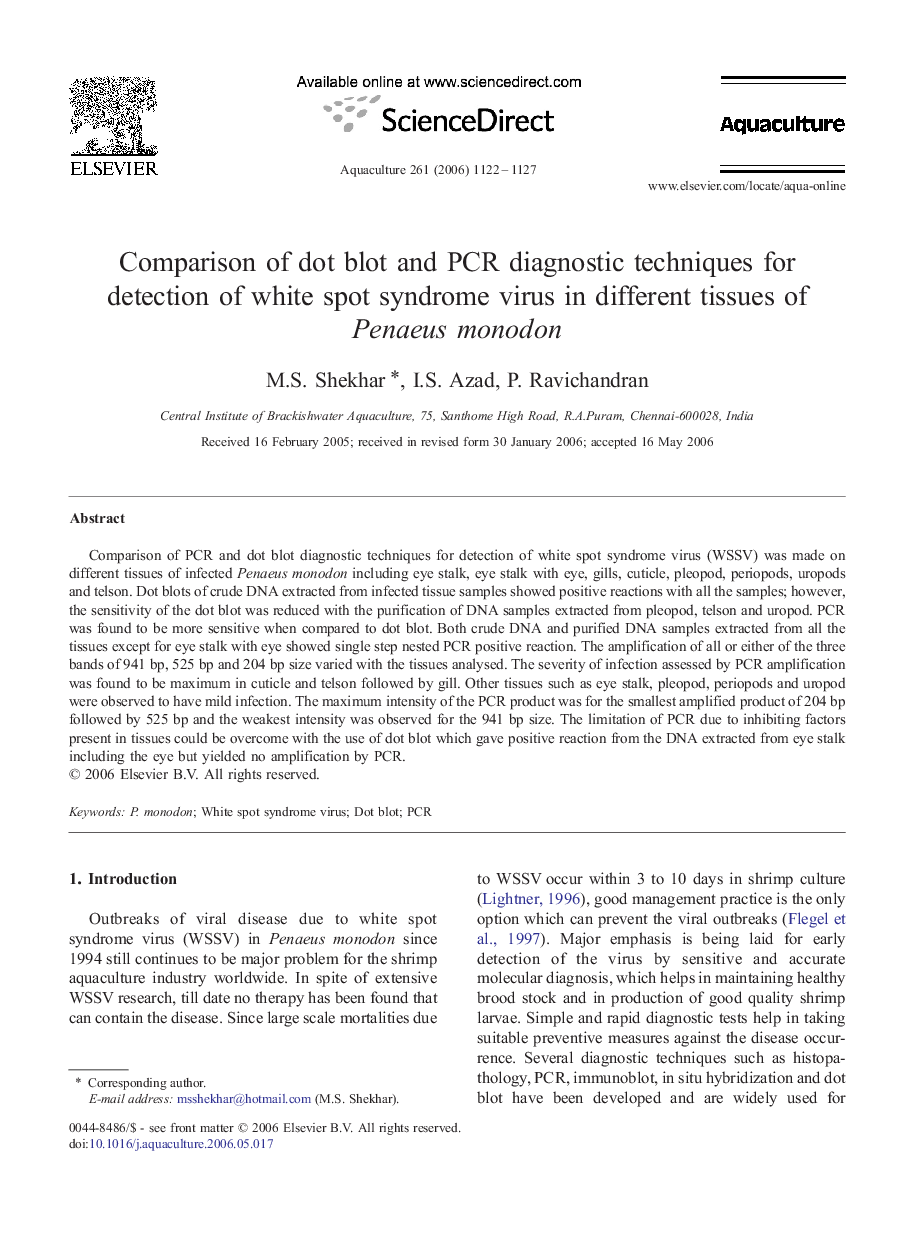| Article ID | Journal | Published Year | Pages | File Type |
|---|---|---|---|---|
| 2425497 | Aquaculture | 2006 | 6 Pages |
Comparison of PCR and dot blot diagnostic techniques for detection of white spot syndrome virus (WSSV) was made on different tissues of infected Penaeus monodon including eye stalk, eye stalk with eye, gills, cuticle, pleopod, periopods, uropods and telson. Dot blots of crude DNA extracted from infected tissue samples showed positive reactions with all the samples; however, the sensitivity of the dot blot was reduced with the purification of DNA samples extracted from pleopod, telson and uropod. PCR was found to be more sensitive when compared to dot blot. Both crude DNA and purified DNA samples extracted from all the tissues except for eye stalk with eye showed single step nested PCR positive reaction. The amplification of all or either of the three bands of 941 bp, 525 bp and 204 bp size varied with the tissues analysed. The severity of infection assessed by PCR amplification was found to be maximum in cuticle and telson followed by gill. Other tissues such as eye stalk, pleopod, periopods and uropod were observed to have mild infection. The maximum intensity of the PCR product was for the smallest amplified product of 204 bp followed by 525 bp and the weakest intensity was observed for the 941 bp size. The limitation of PCR due to inhibiting factors present in tissues could be overcome with the use of dot blot which gave positive reaction from the DNA extracted from eye stalk including the eye but yielded no amplification by PCR.
